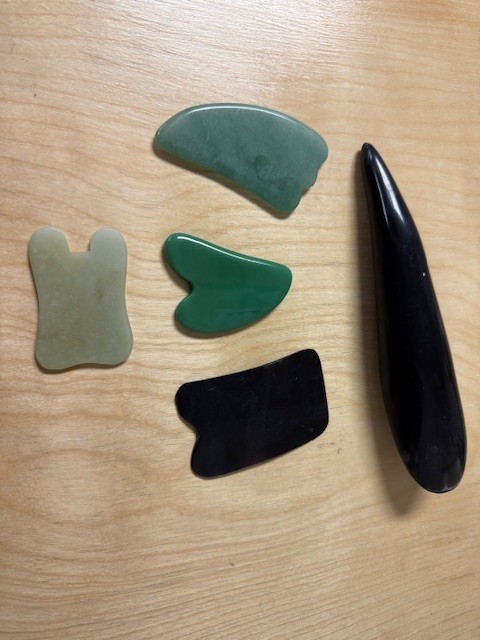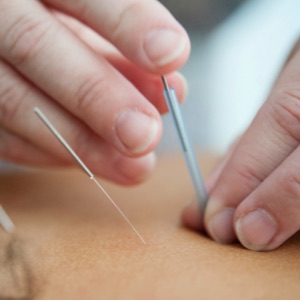How To Gua Sha at Home and Why You Should

As the weather changes and things start to cool down, everyone’s muscles start to feel tighter and less forgiving. Gua sha is a simple yet very effective massage technique for sore and tight muscles. Gua means to rub or scrape and sha is the discoloration that can occur in the skin. The skin can turn pink, red, or a dark reddish/purple color. The dark bruising color is called petechia in western medicine. The darker the color the longer the tissue was tight and stagnant. Gua sha is like dredging the channels so circulation in the tissues can flow again.
Studies show that gua sha can increase circulation, stimulate an immune, anti-inflammatory and histamine response, as well as improve tissue mobility and reduce pain and stiffness.
Tools can be made from jade, rose quartz, stainless steel, buffalo horn, or plastic to name a few. The tools should have a smooth surface and edges.
People who have diabetes, taking blood thinners, have circulation issues, cuts or broken skin or possible infections in the area to be treated should avoid gua sha.
Using the gua sha tool at home:
- Make sure you wash and disinfect the tool before and after every use.
- Wash in warm soapy water and then use a disinfecting wipe with bleach and let dry.
- Use massage oil or lotion over the area you want to gua sha. Knees, elbows and back of neck and upper trapezius are usually areas that you can gua sha by yourself.
- Start with light pressure then go deeper if needed.
- It can be sore over the area you are treating. Stop if you have sharp, burning, nerve like pain or if you get a dark sha color. Avoid deep pressure over bony areas on the surface. Do not gua sha the front of the neck. Stay behind the ear as a reference point.
- Dark sha can take anywhere from 3 to 7 days to dissipate. Wait until the color in the area has returned to normal before using gua sha again.


